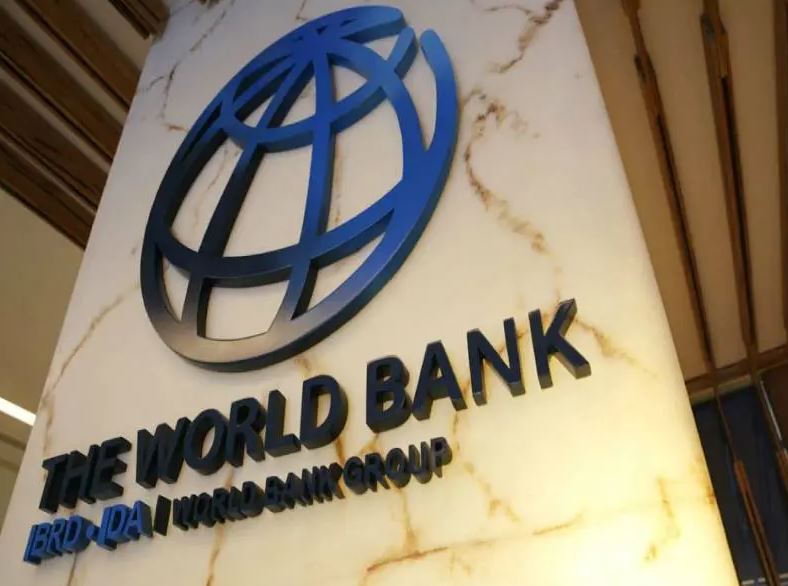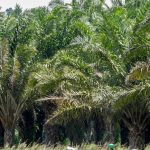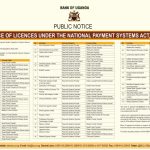Published on 27/10/2025
Government of Uganda has unveiled two major financing proposals worth a combined UGX2.27 trillion from the World Bank and its partners to support education infrastructure, refugee settlement development, and environmental restoration across the country.
The twin proposals, tabled before Parliament by during the October 20, 2025 plenary sitting, seek to bolster the country’s strained social services amid surging refugee inflows and a growing school-age population.

Under the first proposal, Government plans to borrow US$180.5 million (UGX627.97 billion) and receive a grant of US$147.5 million (UGX513.16 billion) from the World Bank Group, totaling UGX1.141 trillion, to finance Phase II of the Development Response to Displacement Impacts Project (DRDIP II).

The project aims to construct schools, roads, and health facilities in refugee-hosting districts while strengthening community resilience and environmental conservation. However, the World Bank has attached strict oversight conditions, requiring the Inspectorate of Government (IG) to monitor the Office of the Prime Minister (OPM) throughout the implementation to prevent corruption and ensure accountability.
According to the Ministry of Finance, Uganda’s refugee population has surged from 220,000 to over 1.8 million, mainly from South Sudan (54%) and the Democratic Republic of Congo (32%), putting immense pressure on host communities struggling with poverty, unemployment, and poor infrastructure. “The increased refugee inflows continue to strain host communities at a time of declining humanitarian aid,” Musasizi said. “Self-reliance of refugees and host communities is now a critical development priority.”

The project will cover 12 refugee-hosting districts—Adjumani, Kiryandongo, Isingiro, Koboko, Yumbe, Lamwo, Kamwenge, Kyegegwa, Madi Okollo, Obongi, Terego, and Kikuube—and extend to transit districts like Kisoro, Kanungu, Bundibugyo, and Ntoroko, as well as urban centers including Gulu, Arua, Mbarara, Hoima, Moyo, Koboko, and Kitgum.
Planned works include: 3,656 new school buildings, 1,400 classrooms, 36 laboratories, 20 dormitories, and 2,000 sanitation facilities; 320 health facilities equipped with furniture, solar systems, and water tanks; 2,300km of roads with 30 bridges and 42 community markets; and 20 rural water schemes with solar pumping systems.
The project also allocates US$30 million (UGX104.37 billion) for ecosystem restoration, including reforestation of 7,000 hectares of degraded land and afforestation of 6,500 hectares. An additional US$16 million (UGX55.66 billion) will fund administration, monitoring, and accountability systems.
The second financing proposal seeks US$210 million (UGX730.61 billion) from the World Bank and a US$114.8 million (UGX399.40 billion) grant from the Global Partnership for Education (GPE), a total of UGX1.13 trillion, to implement the Uganda Learning Acceleration Program (ULEARN).
The program aims to address critical gaps in education infrastructure and learning quality as Uganda’s school-age population is projected to rise from 16 million in 2020 to 22.7 million by 2040.
Despite near-universal access to primary education (91% enrolment), secondary education remains low at 22%, while Uganda’s Human Capital Index (HCI) of 0.39 suggests children born today will only achieve 39% of their potential productivity due to deficiencies in education and health. “Investing in human capital is an urgent priority,” Musasizi said, emphasizing Uganda’s high fertility rate of 4.5 births per woman and dependency ratio of 89 per 100 economically active persons—both higher than the Sub-Saharan average.
Under ULEARN: US$89 million (UGX309.64 billion) will promote teaching and learning of Kiswahili in P4–P7, train teachers, and upgrade 29 Teacher Training Institutions, US$189 million (UGX657.55 billion) will improve learning environments by rehabilitating and equipping 121 traditional secondary schools and 66 inclusive primary and secondary schools, US$26.8 million (UGX93.25 billion) will support coordination, monitoring, and technical assistance to the Ministry of Education and Sports.
The program is expected to directly benefit 8 million learners and 65,000 teachers through improved facilities, teaching materials, and digital learning tools. Both financing proposals are expected to be scrutinized by Parliament’s Committee on National Economy before final approval.
If endorsed, the combined UGX2.27 trillion investment will mark one of Uganda’s largest education and refugee infrastructure packages in recent years, signaling a push to bridge service delivery gaps amid demographic and humanitarian pressures.








